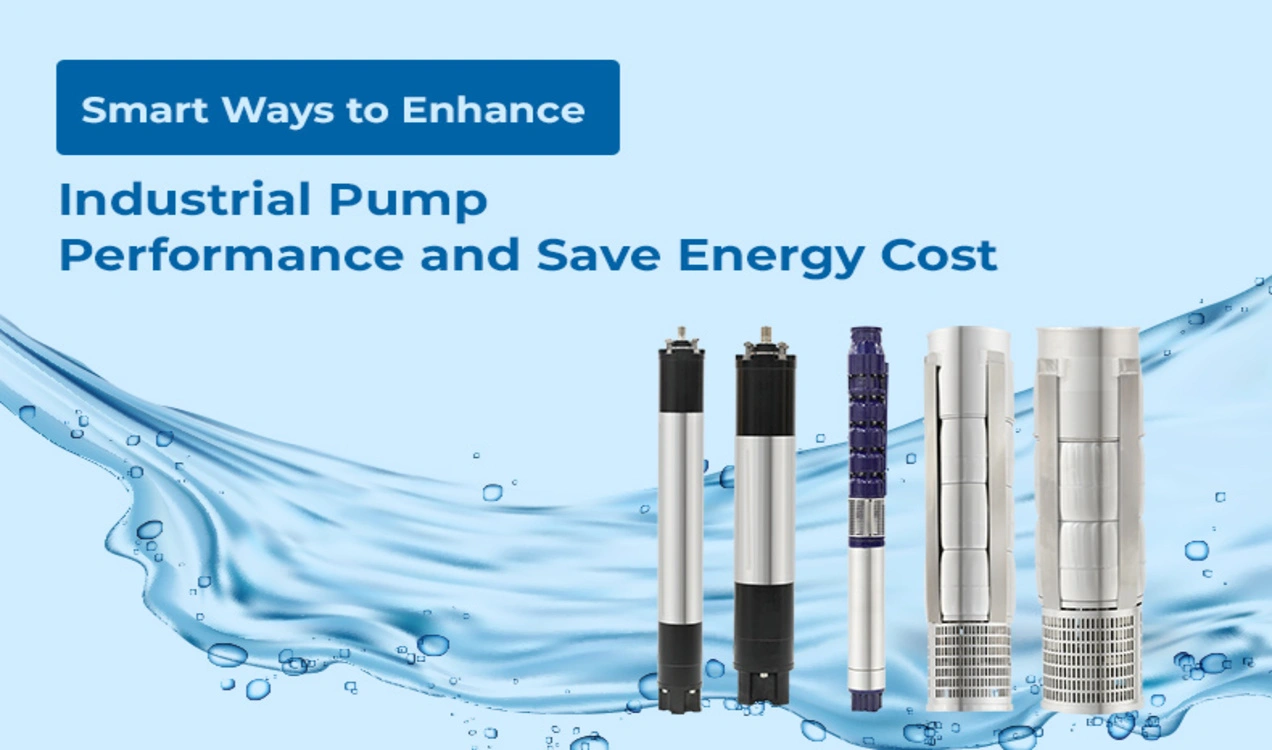Industrial pumps are used to carry out different types of activities at manufacturing facilities, power-plants or other industrial facilities. Therefore, a pumping system is used at all types of industries irrespective of their type and size.
According to the Department of Energy in the US, the pumping systems installed at industrial facilities are responsible for almost 16% of the total electricity costs. The pumps used by drinking water systems in order to treat and distribute the water account for up to 80% of the total energy used by the facility.
A variety of factors, such as aging, inadequate maintenance, incorrect installation or wrong pump model, may lead to reduction in a pumping system’s efficiency. Thus, it is essential to know how to reduce the energy consumption and increase the efficiency of a pumping system.
Tips to Enhance Industrial Pump Performance:
1. Select Most Efficient Pump Type for Applications
It is essential to select the right pumping system for an industrial facility since incorrect selection results in overconsumption of electricity and less than efficient performance of the system. A research-based study in Finland shows that 10% of the pumps used in industrial facilities are 10% or less than 10% efficient and average pump efficiency is less than 40%.
Therefore, it is essential for an engineer, who is authorized to select the pump for an industrial facility, to consult with the manufacturing company or a distributor in order to select the right pumping system with respect to its type, size, speed, type of drive and power requirements.
A manufacturer and distributor can even assist an engineer in selecting the right type of mechanical seal and auxiliary equipment for a pumping system. A properly sized pump for an industrial facility will consume moderate energy, provide optimum performance and last longer.
2. Periodic Maintenance
A pumping system, which has been routinely maintained, will consume less energy and can perform to the best of its ability. Routine maintenance may cut down the electricity costs by 7% and the following parts of a pumping system have to be inspected during the maintenance.
- Bearings
- Impellers
- Packing seals
- Mechanical seals
- Motor alignment
It is essential to immediately replace any of these parts if there is any sign of wear and tear.
3. Avoid Oversizing of Pump
An oversized pump will consume a lot of unnecessary energy whilst delivering less than efficient performance. In an oversized pumping system, the motor has to work harder in order to maintain proper flow and pressure when pumping the liquid. The over-sizing may result from incorrect selection of the pumping system or due to addition of multiple safety factors. Thus, an engineer has to carefully calculate the size of a pump for an industrial facility and may consult with the pump manufacturing company or distributor before adding new features.
4. Daily Monitoring
Regular monitoring of the vital components of a pump is as important as the routine maintenance. It enables an engineer to detect an issue before it progresses and results in expensive repair or replacement. You can detect the following problems at the primary stage through regular monitoring.
- Blocked/clogged pumps
- Faulty impellers
- Inadequate suction
5. Parallel Pumping System
An industrial facility can reduce the energy consumption if multiple pumps operate as part of a parallel pumping system. This type of pumping system works efficiently if the pumps attached to the system run individually at the same time instead of running concurrently.
6. Prevent Unnecessary Use
The unnecessary use of a pumping device results in excessive consumption of electrical power alongside reducing the efficiency of the pumping device since each component has to overwork. Thus, different components of a pumping system will be damaged or worn out due to unnecessary use and the need for frequent repairs or replacement will result in additional expenditure. To increase the efficiency of a pumping system, it is essential to shut down the pump when it is not in use and to use the pressure switches whenever necessary.
7. Implement Proper Control Valves
The control valves are used to regulate the flow and control the pressure of the liquid. It is possible to have a fixed-speed pump through implementation of proper control valves which reduces the energy consumption.
8. Minimize the Pressure Drop
It is possible to control the energy consumption by reducing a system’s pressure drop. It can be achieved through optimization of pipe-sizing. The hydraulic friction loss results in reduction of pressure from one end of a straight pipe to another and a system’s pressure drop is influenced by the following factors.
- Pipe size (in diameter) and overall length of the pipe
- Flow rate
- Pipe’s features, such as construction material, surface roughness etc.
- Properties of the fluid that is being pumped
Conclusion
You can extend the life of a pumping system by following these tips alongside noticing an increase in a pumping system’s efficiency and reduction in energy consumption. You will also notice reduction in energy consumption through regular checking of the parts and preventative maintenance.
Did this article provide you the answer you were looking for? Visit us at Unnati Pumps to find similar articles.


